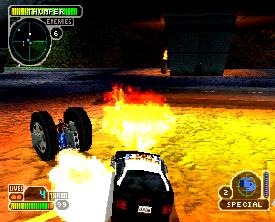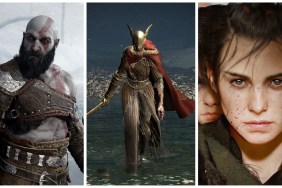The End of a Dynasty
Way back when the Playstation was a drooling infant, Singletrac developed Twisted
Metal. In doing so, they more or less invented a whole new genre of video
games. The idea is that you pilot some freak-ass car through vast, fully-rendered
3D environments with one basic goal: blow stuff up. Add a two-player mode that
…
-
Nice multi-player options
-
Rob Zombie sounds good
-
Horrible level design
-
Physics engine bites
-
Lackluster graphics










